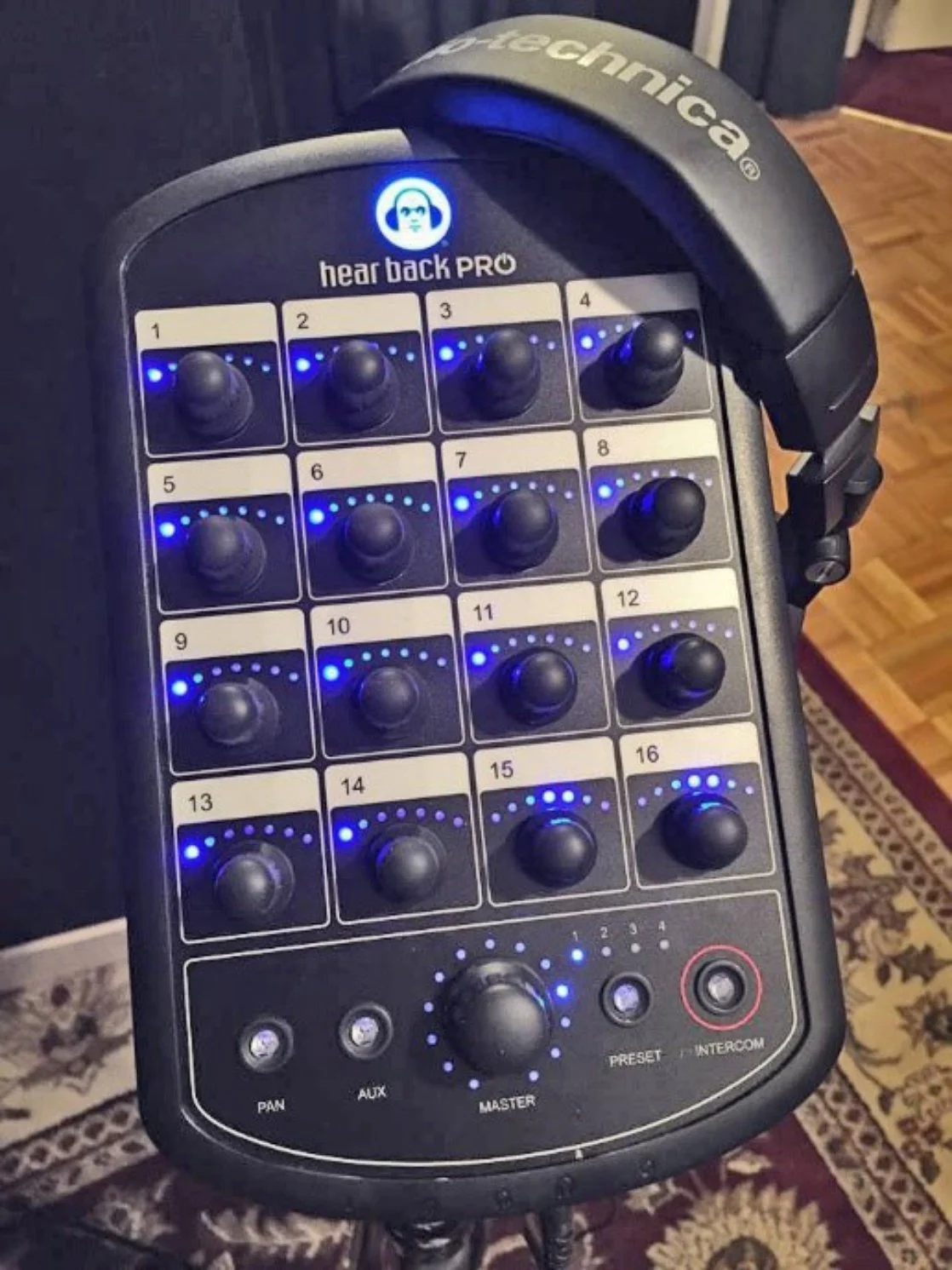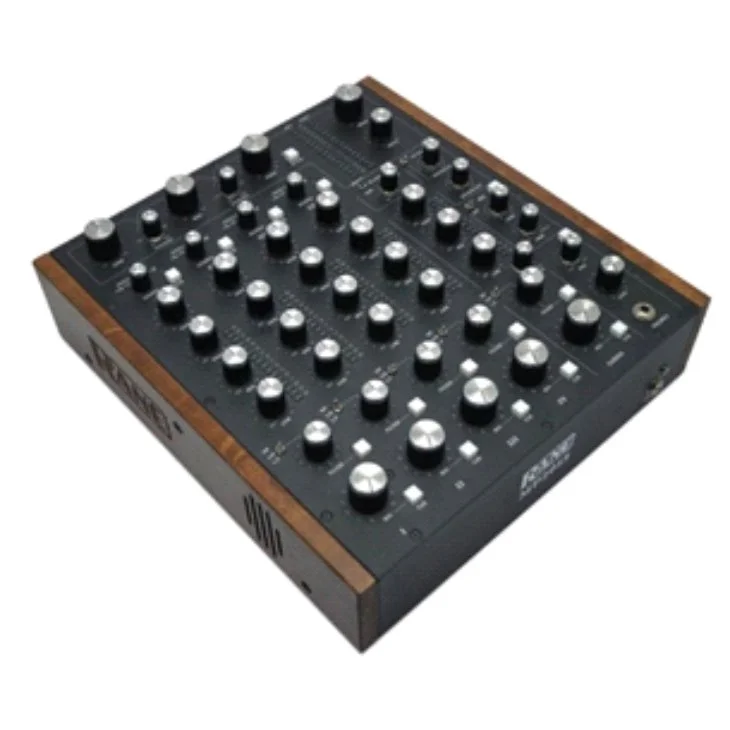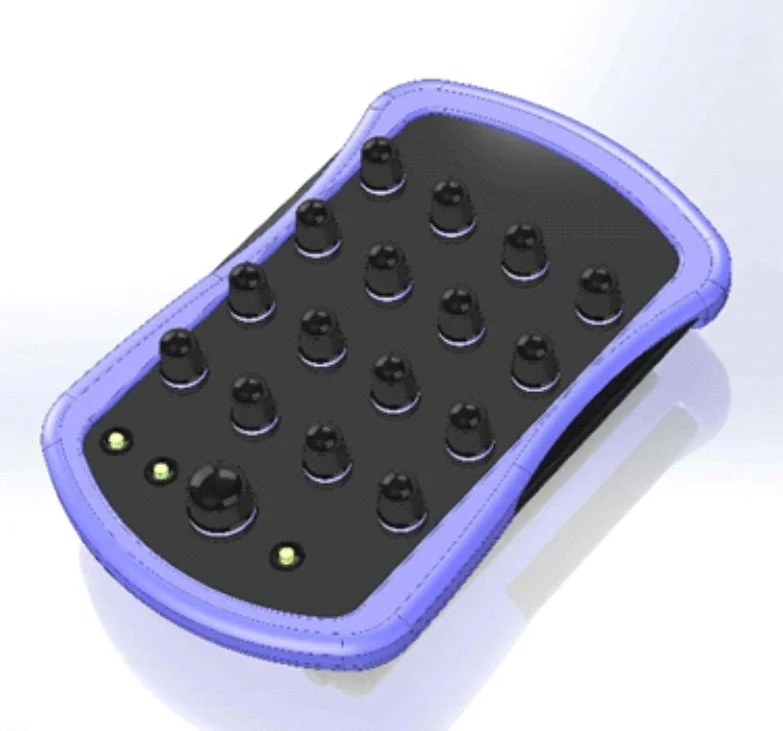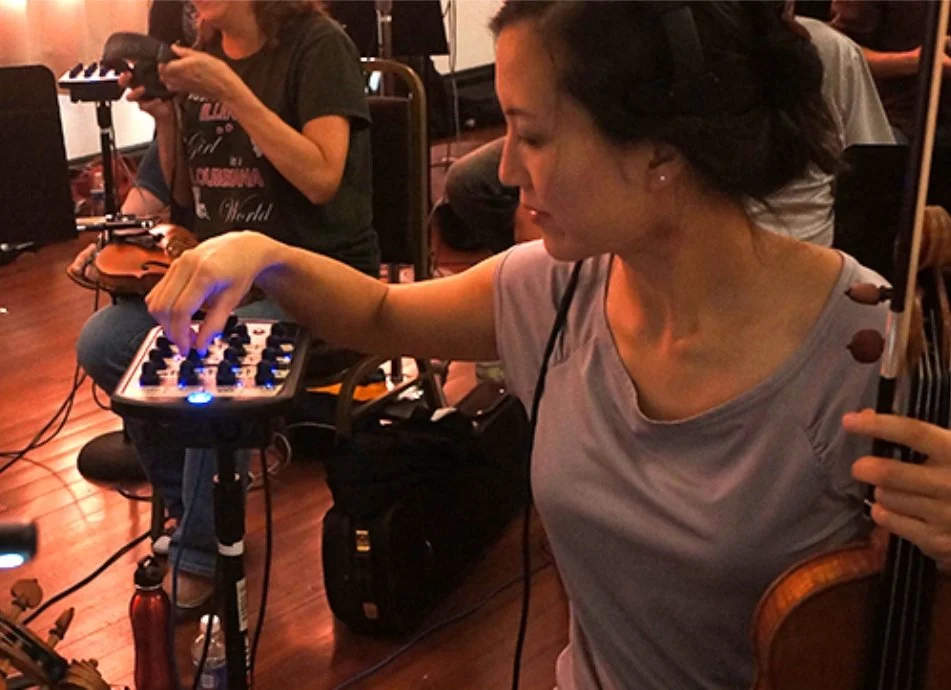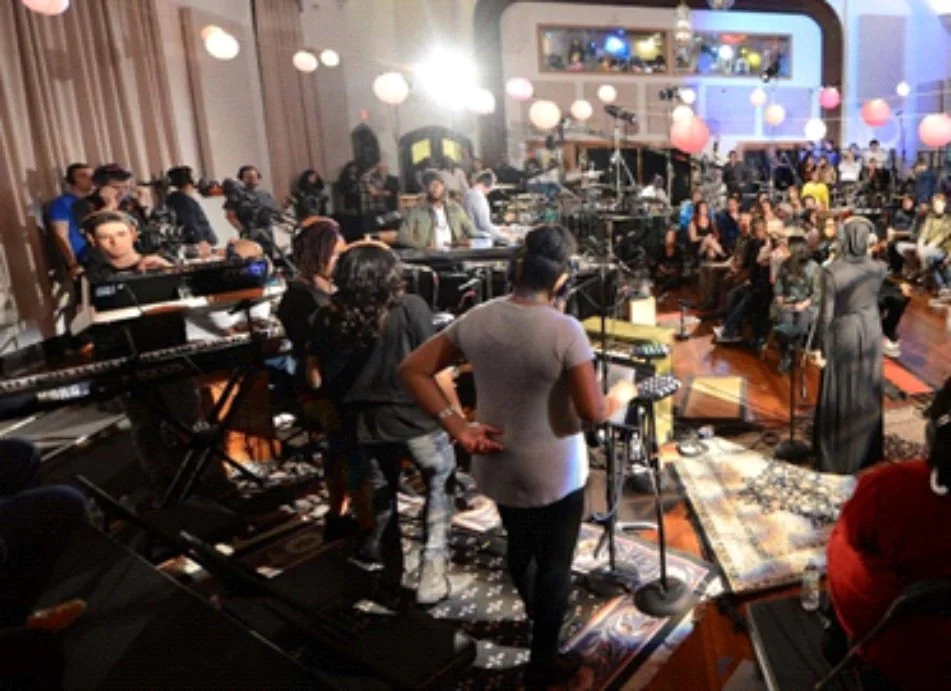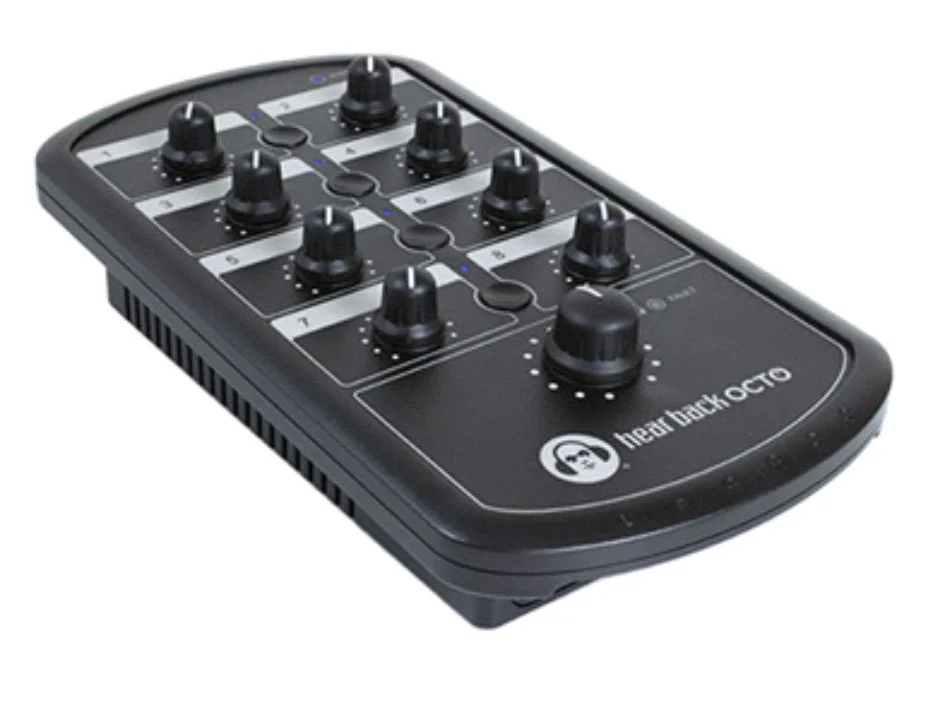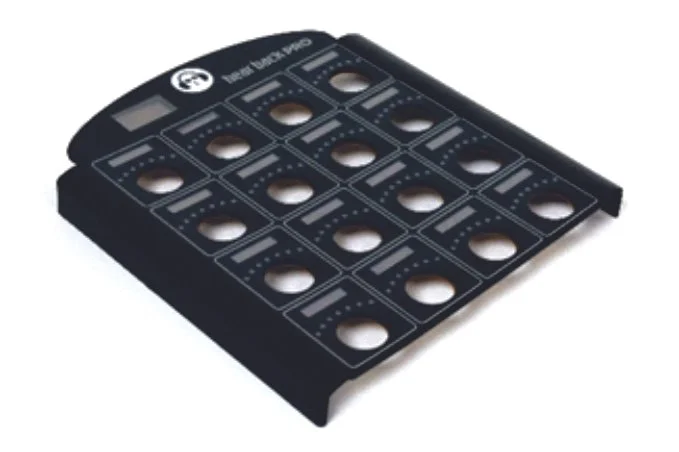Hear Technologies - Hearback Pro
Personal sound mixer system
Hear Technologies offers affordable pro audio for personal and professional monitoring systems, setting a goal of high-quality sound for everyone from beginners to pros.
This is one of those companies you enjoy working with - the people, the product, the attitude.
They asked for a product with a look that was appropriate for the sound stage environment but still fresh and identifiable as a serious mixer. It would be a sixteen channel device with multiple cable options and a mic stand mounting option.
Foundation
Looking at the current visual language of the whole field of mixers, there seemed to be two main controlling features:
The first was function, multiple rows of rotary switches easily identified and adjusted. And the second was construction. Low volumes kept tooling costs minimal, resulting in housings that were tidy but provided little identity.
At the same time, the explosion of laptops, tablets and flat phones in the consumer marketplace had trained the world to communicate with technology in a new way. Consumers were expecting sophisticated technology to be presented in sophisticated packaging.
Since Hear Technologies' new product was aiming not just for the professional market but also for a broader market of enthusiasts, musical bands, church choirs and so on, their product would need the flavor of the consumer products but the feel of the professional units.
Concept Development
The initial impulse in developing the concepts was to allow the interface area to be reduced to a floating graphic, slimming its appearance as far as possible. Seven connectors, a mic stand mount and a large PCB surface area made this a challenge. Splitting the PCBs into a top part to mount the switches, and a bottom part to mount the connectors answered the issue. A top floating “tablet” would provide an apparent slimness.
Different profiles were tested to provide a clean look but one which broke from the generic look of a tablet. It also had to look good with its back side exposed to the audience!
The impact of alternative graphic arrangements was examined, with a view to emphasizing the flatness of the look. The dials were specifically designed to not add a second visual level to the design. Each channel was defined by its graphic pad and all information kept within that “display” area. In a similar way, the shape of the LED bar was curved to leave it identifiable with the knob that controlled it, but flattened enough so the illuminated LEDs would not be masked by the buttons around it.
The environment these devices live in is not all that friendly, with equipment being constantly packed and unpacked. A bumper was proposed to give the housing some protection but this was not finally required.
Illumination
The visibility of the LED readouts was critical to the function of the device, as it is used on a darkened stage and the displays need to be immediately visible. This design uses a light pipe component to carry the light from the LEDs on the top PCB to the top surface of the overlay, using undemanding tolerances. The clear windows printed on the overlay allowed the emitted light to be masked precisely and positioned accurately relative to the dials.
Overlay
The use of various beverages has not been unknown in the environments where this device is used, so the vinyl overlay was fully bonded to the top cover, allowing a degree of liquid protection. Raised pads under the dials helped with sealing the electronics further. These pads also helped the overlay to be accurately positioned. Provisions for an additional, removeable, overlay were also included.
Knob design
As indicated earlier, the knob was designed to maximize tactile feedback while minimizing visual intrusion. Alternative designs were tested . The rounded cap detail and circular ring were chosen as they made the knob secondary in visual impact to the display surface, and gave a more graphic presentation..
Conclusion
The immediate acceptance of this product in its market was a testament to its capabilities, becoming a required element in the stage setup to many celebrity names. While it is the technology that provides this simple solution for personal monitoring, and some of the best sound in the business, the design has allowed easy access to that technology, and an iconic image to back it up.
Hear Back OCTO
Beyond the immediate impact of this product, the design has provided the foundation for other products in the line.
The Hear Back OCTO is an eight channel version of the PRO. It is not only compatible with the PRO, it uses the same design language, cable locations and mounting points, making setup intuitive and its appearance harmonious with the rest of the system.
PRO Digital Overlay
A Hear Back PRO with a digital overlay was also designed, allowing a description for each channel to be added digitally. Features from an earlier PRO concept were incorporated to create this design. The electronic attachment of this component is through the existing side port.


